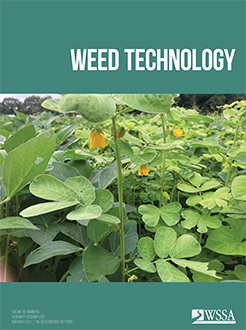A chloroacetamide herbicide by application timing factorial experiment was conducted in 2017 and 2018 in Mississippi to investigate chloroacetamide use in a dicamba-based Palmer amaranth management program in cotton production. Herbicides used were S-metolachlor or acetochlor, and application timings were preemergence, preemergence followed by (fb) early postemergence, preemergence fb late postemergence, early postemergence alone, late postemergence alone, and early postemergence fb late postemergence. Dicamba was included in all preemergence applications, and dicamba plus glyphosate was included with all postemergence applications. Differences in cotton and weed response due to chloroacetamide type were minimal, and cotton injury at 14 d after late postemergence application was less than 10% for all application timings. Late-season weed control was reduced up to 30% and 53% if chloroacetamide application occurred preemergence or late postemergence only, respectively. Late-season weed densities were minimized if multiple applications were used instead of a single application. Cotton height was reduced by up to 23% if a single application was made late postemergence relative to other application timings. Chloroacetamide application at any timing except preemergence alone minimized late-season weed biomass. Yield was maximized by any treatment involving multiple applications or early postemergence alone, whereas applications preemergence or late postemergence alone resulted in up to 56% and 27% yield losses, respectively. While no yield loss was reported by delaying the first of sequential applications until early postemergence, forgoing a preemergence application is not advisable given the multiple factors that may delay timely postemergence applications such as inclement weather.
Nomenclature: Acetochlor; dicamba; glyphosate; S-metolachlor; Palmer amaranth, Amaranthus palmeri S. Watson; cotton, Gossypium hirsutum L.






